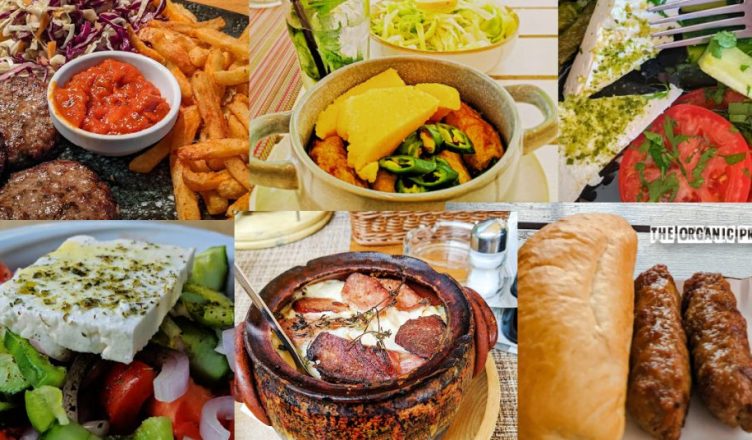As a lot of you know, I’ve been living in Europe for the past six months. But not “fancy” Europe. No Paris, no London, no Berlin, no Milan. Instead, I’m sticking to the less expensive and many would argue, less sophisticated Balkan countries. I’ve learned a lot from this research-heavy trip and one thing that particularly applies to preparedness is traditional food.
Sure, they’ve got modern bistros in Sofia and spicy Thai bowls in Bucharest, but my goal is not to be “fancy” – it’s to eat what local folks eat. So I focus on traditional restaurants, farmer’s markets, bakeries, and the like to stay fed. And if you pay attention when you do this, there’s a lot you can learn from traditional diets.

I always lose weight when I spend time in Europe. Part of it is probably due to the walking – I don’t have a car here, and my feet are my transportation. But the other part is the healthy, balanced local cuisine that isn’t soaked in glyphosate or tainted with genetic science. I notice an immediate difference in how my joints feel and in my energy levels. And this is all without restricting food or cutting out entire dietary groups. It’s simply eating normal food like a normal person.
Let me be perfectly clear: I’m not suggesting you need to slave for hours in the kitchen over every single meal. A lot of these things are not particularly labor intensive, and there are always shortcuts you can take while maintaining the level of nutrition that is just a part of traditional food.
Here are a few observations. These probably aren’t earth-shattering, but I hope you find them of interest.
Preserved produce is part of many meals.
In Bulgaria, a meal is not complete without a smokey dollop of lutenitsa. This is a sauce that is predominantly made from red peppers and also contains tomato, eggplant, onion, and carrot. The veggies are grilled or roasted then pureed into a sauce that is used as a condiment for meat and french fries and is also spread on a piece of fresh, warm crusty bread. It also plays a starring role in meat and cheese platters. You can make it fresh each time, or make a huge batch and pressure bath can it for some tasty vitamin C in the winter. (A lot of sites will tell you that it’s ok to water bath can this – I wouldn’t. The eggplant and peppers are too low-acid to be safely processed in a water bath.) There’s a very similar sauce to this in Bosnia and Serbia called ajvar, which does not have tomatoes and eggplant in it.
In Romania, it seems that a meal is not complete unless it contains pickles – or muraturi. It’s a catch-all word that could land any number of pickled items on your plate. Often it’s the green cucumber pickles we’re familiar with when titling an item a pickle, but it could just as easily be beets, cabbage, or even a mix of veggies that have been brined. I’ve even seen menus with what translates to “pickle salad” – and this is simply a bowl of pickles of some description. What we’d consider pickles in America are called specifically pickled cucumbers. Here’s a traditional Transylvanian pickle recipe. and here’s a video about pickling veggies. I was never a fan of pickles until having the Romanian ones, and maybe I’ve just been Stockholmed into liking them.
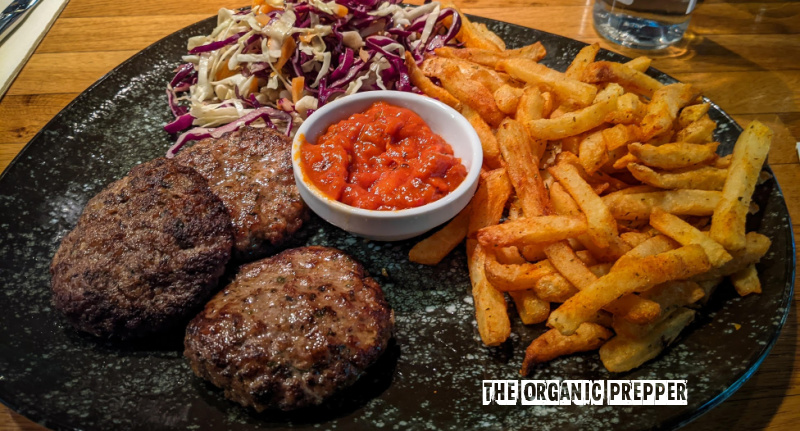
Carbs are king.
Folks in this part of the world are NOT afraid of carbs. If you said that you ate low-carb here they would look at you with confusion and offer you another potato. There is not a meal in sight in a traditional restaurant that doesn’t have at least one filling, delicious carbohydrate.
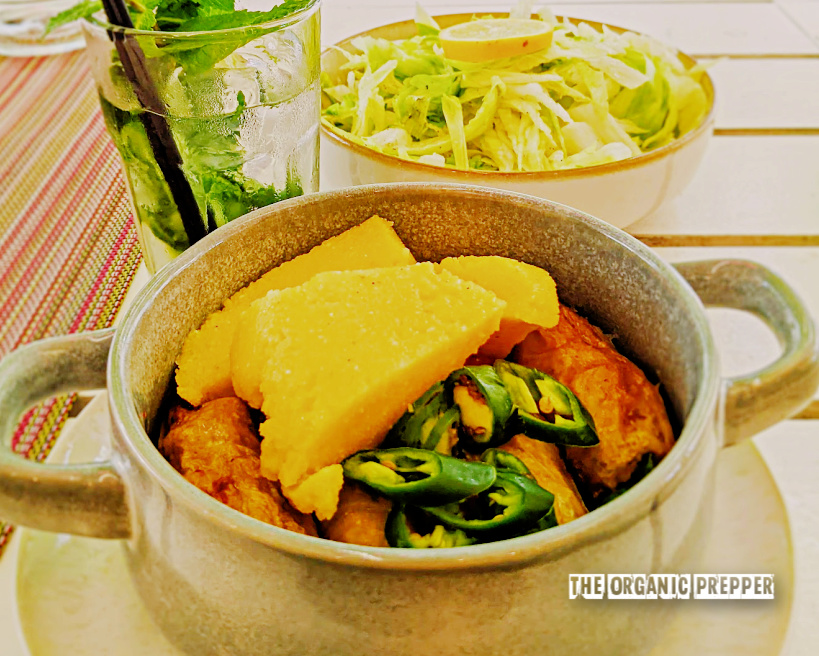
I went to a roadside tavern in Transylvania and ordered a meal that contained smoked meat, cheese, potatoes, AND polenta. It was baked in a clay dish and served as hot as the surface of the sun. There was a side of bread and butter, and of course, a bowl of pickles. It fueled me through a long afternoon of climbing ten billion steep tiny steps while touring a medieval castle and was absolutely delicious.
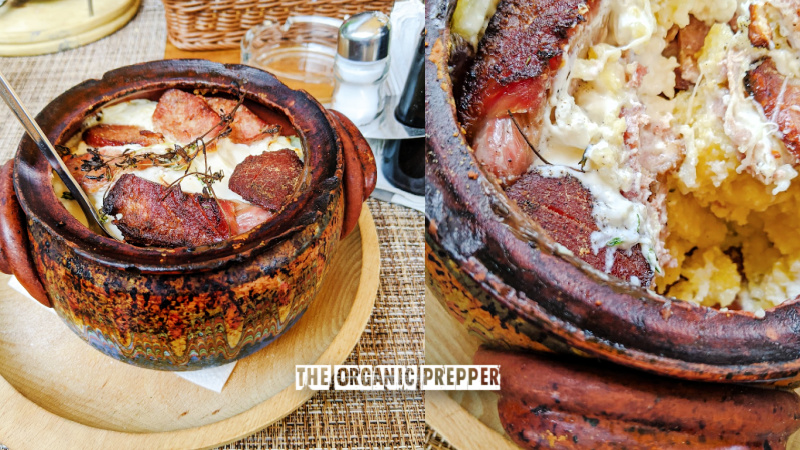
But there’s more to carbs than just giving you energy. They’re cheap and filling, and during difficult times this is more important than ever. As well, if times are tough, there’s a very good chance you’ll be doing a whole lot more physical activity and you’ll need that energy.
You may be thinking, “Carbs are the devil,” or “I’m diabetic, you idiot!” Well if you feel strongly about it, you don’t have to eat them. If you have a health contraindication, you shouldn’t eat them. But be sure you are cutting them out for the right reasons. Whole food should not be scary, and this is a very American way of looking at nutrition.
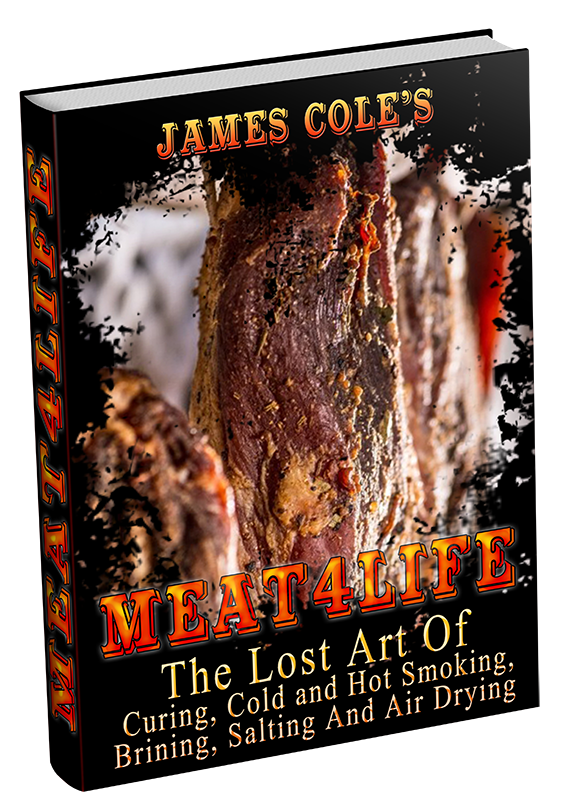
Dairy is delicious.
I don’t do a whole lot of dairy in the US. I eat occasional cheese because it’s CHEESE, but I use oat milk in my coffee and can’t even remember the last time I had a glass of milk as a beverage.
On my travels, however, avoiding dairy is no easy option. If you asked for oat milk at the cafe they’d look at you in confusion and probably bring you a bowl of oatmeal with milk. You can get a whole lot of different kinds of dairy milk at the grocery store, however, that aren’t always available in the US. Cow’s milk at various levels of pasteurization. Goat’s milk. Sheep milk. If you want a kind of milk, you can generally find it. What they don’t have is half-and-half and other concoctions like that. You can get your milk at 05, 1.5%, or 3.7%.
It’s used liberally in food too. Decadent creamy sauces, rich risotto, velvety polenta, and smooth whipped potatoes are served with nearly every meal. And don’t forget the cheese. Brined cheese, in particular, is very popular, and they don’t skimp on it. If you get a salad that has cheese, you get big whopping slices of it, an amount that I’d normally get for an entire week of Greek salads back home in one delicious dish.
But that isn’t all. Yogurt, sour cream, and kefir were all developed as ways to get a little more life from your dairy products. Cheese in brine can last for up to a year in a barrel in your cold room. Finding ways to use these products will add richness and flavor to your menus, even in hard times.
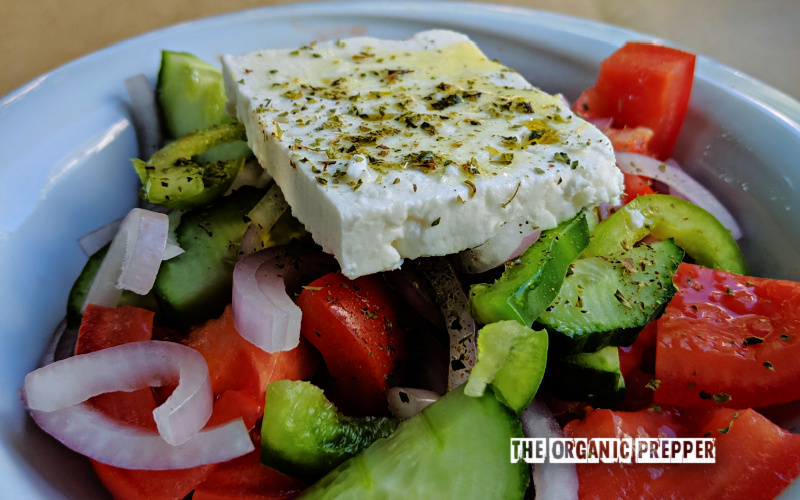
Bread really IS the staff of life.
It’s pretty rare to have a meal here that isn’t served with fresh, delicious bread. The great thing about bread is that it’s filling and provides you with energy, much like our discussion of carbs above. It’s inexpensive, particularly if you’re making it yourself.
And that’s another thing. When I say bread, I’m not talking about those icky cellophane bags from the grocery store shelf. I’m talking about bread that will actually mold in 3 days, and believe me, that’s the kind you want. It shows that every single iota of nutrition hasn’t been filtered out by a processing plant. They sell that kind of bread, but it very clearly says on the label, “TOAST” because Europeans don’t believe it’s fit for any other purpose.
You can make a dish of soup or stew go a whole lot further if you put a rustic loaf of bread on the table with it, and people will look at the meal in a completely different way with this simple addition. So, not only is it filling – it’s also the difference between something that seems sparse and something that makes people excited to sit down for the meal.
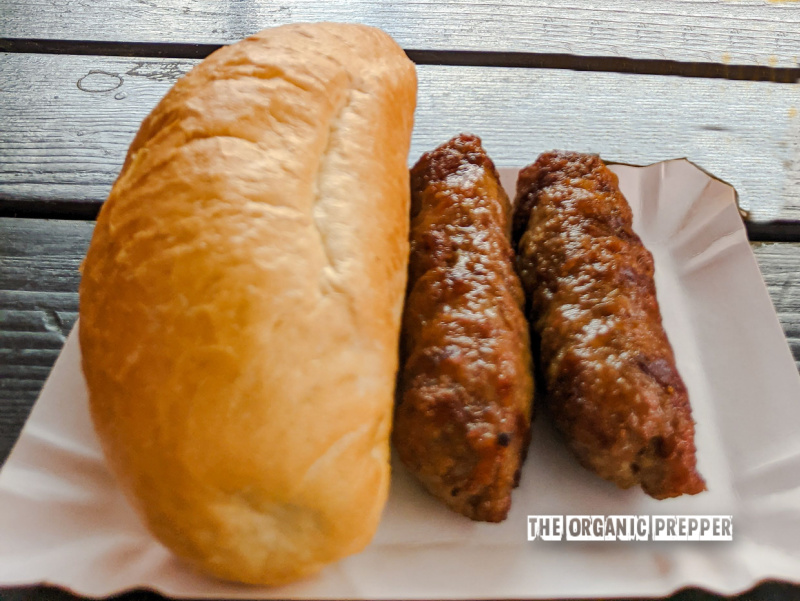
Sip on this.
How do you spot the American in the restaurant?
They’ve got a soda pop in front of them.
Sure, these countries have Coca-Cola and local sodas available, but most commonly, local folks drink the following:
- Water (still or sparkling)
- Coffee/tea
- Beer
- Wine
Going back in time, aside from the sparkling water, these are pretty traditional drinks. As a prepper, these are drinks you can acquire, store, or make. And if you stop buying fruity drinks and soda pop, your screaming grocery budget will thank you.
Simple is better.
When the ingredients are high-quality and best of all, fresh, you don’t NEED to be fancy. They’ll speak for themselves. Maybe add a few seasonings like herbs or sliced jalapenos, but you don’t need tons of added “stuff” or dips. Salad dressing is, most of the time, oil and vinegar that you put on yourself at the table. I was a bit confused as to why all my salads were dry until I realized this. Some salads don’t even need dressing due to the fresh and fabulous ingredients.
I’ve never eaten so much fresh parsley and oregano in my entire life. Back home, we use it mostly as a little garnish, but here it’s chopped up and used liberally to add freshness to a dish.
You can order a bowl of strawberries at a restaurant, and they’re just plain, delicious sliced berries with no syrup or whipped cream. Fresh sliced veggies have chopped herbs and a drizzle of high-quality olive oil. Carbs are topped with butter and black pepper.
If your food is good enough, it can stand on its own. Meals don’t need to be five courses of fancy. A delicious main dish and simple buttered potatoes with a side of fresh veggies is filling and delicious. And there’s nary a Lipton Sidekicks saucy pasta or rice in sight. There aren’t any additives. It’s like stuff your Grandma would’ve served your Grandpa before our kitchens became experiments in industrial food.
Could it be time to rethink the meals you serve?
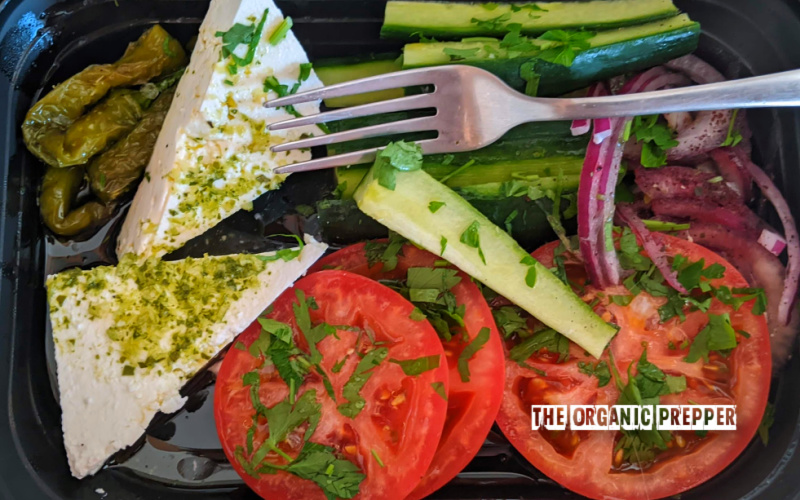
Traditional Food for thought
Over here, you don’t see a lot of vegans and vegetarians. Nobody I’ve encountered eats low-carb or grain-free, or dairy-free. In fact, if you try and order those types of meals in restaurants, they’ll look at you oddly. They’ll nod, and sometimes they’ll try to accommodate you (but not always – there’s a culture of you’ll-get-what-you-get here). I’ve certainly loosened up and simply try to go with the flow and not be too picky.
These things aren’t particularly “foreign” either. They just go back to a time that is largely forgotten in most of the US. This is how our grandparents ate before food became an industrialized product. We, as preppers, are all about the throwbacks – perhaps we need to uncomplicate food and revisit the past.

I hope this missive about traditional food inspires you to look at your diet a little differently if this isn’t how you eat right now. I know that I fully intend to bring home recipes and ideas that I’ve collected, as I’ve done over the years after being influenced by my time in Mexico and other places. Perhaps some of these foods will make their way to your own tables or give you some ideas for your garden goodies.
Do you eat traditional food? What are some of your favorites? How about foods from other countries or cultures? Can you see how you might apply some of this to preparedness?
source : Daisy Luther

